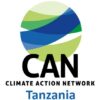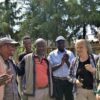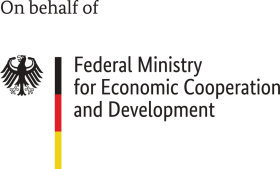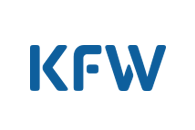“Modern electrical appliances are rarely worthwhile for individuals, but they are for groups.”

The sector for Productive Use of Energy (PUE) is growing in the greater renewable energy industry. Some renewable applications are gaining acceptance on the market. For others, scalability has not yet been achieved. In this interview, Miriam Schröder, energy access expert, and Carsten Hellpap, former head of EnDev, talk about successes, developing markets, the double-edged nature of subsidies, and explain why village communities and cooperatives can make the difference.
The PUE sector is developing, but challenges remain. What successes do you see?
Miriam Schröder: There are now numerous PUE products. Some, for example solar pumps, have reached market maturity. Other products are yet be scaled up. Solar modules have become cheaper. We are seeing development of mini-grids in many regions, which significantly increase generation and utilisation capacities and, for the first time, make it possible to operate more energy-intensive applications.
Carsten Hellpap: I also see progress in battery technology. Innovative financing models are also making inroads as funding models for market development, be it pay-as-you-go models for customers or result-based financing. In recent years, we have gained a lot of experience on how to better tap the market potential in poorer sections of the population.
Access to electricity is increasing in rural areas. However, people are realising greater supply of energy does not always mean added value. How do you see that?
Carsten Hellpap: There are a number of studies that show access to energy does not automatically lead to more economic activity and higher income. They describe snapshots. We should not draw hasty conclusions. We need to distinguish between short-term and long-term effects. The experiences EnDev and Green People’s Energy have made with basic energy supply show that when people see the potential and opportunities, sooner or later they also use it to generate income.
Miriam Schröder: We are currently experiencing a shift in the debate back to the original idea for PUE in that we see energy more as a means to an end again. It’s a chicken-and-egg discussion. Do we need development first and then energy, or vice versa? We should use complementary approaches, involve various players and keep all necessary parameters in mind. I see the PUE sector developing, we have more data now, traders also see opportunities in rural regions, and they are organised. The founding of the Global Distributors Collective is just one example, which wants to ensure “last mile” distribution around the world.
What is needed for access to energy to result in value creation?
Carsten Hellpap: First and foremost, there needs to be a market, a demand for electrically produced or refined products. But that by itself won’t be enough. If a region has no road connection to market, for example, it rarely makes sense to produce good but perishable products. In addition to an existing market for a product, a corresponding infrastructure is also needed. A market analysis and analysis of the marketing channels are indispensable beforehand. Ultimately, it is a matter of developing demand potentials locally, regionally, nationally and internationally for our target groups in partner countries.
Miriam Schröder: For markets to develop, you also need PUE companies that want to set up distribution structures in rural areas. They do this if they see an advantage in doing so. Government agencies or development organisations can promote this by reducing their risk in difficult market segments, for example through result-based financing.
Are there other barriers?
Carsten Hellpap: People need to be able to operate and maintain purchased PUE technologies. They also need knowledge of how to develop and implement their business model. And they need financial products that enable them to invest.
Miriam Schröder: Unlike a basic solar home system, most PUE devices are significantly more expensive to purchase. Many potential customers fear, not without good reason, that they could end up in debt – and hesitate. It is all the more important they receive advice beforehand, so they can calculate their investment and possible income additions. Providers of solar technology are rarely in a position to do this, but implementation organisations and agricultural advisors in particular can. Development organisations can and increasingly do intervene at all these barriers. Green People’s Energy is a good example of this.
Purchasing power in many rural regions is low, which is why development organisations subsidise PUE technologies. Some traders, no doubt those who do not benefit, complain this approach is detrimental to market development. How do you see this?
Miriam Schröder: Introduction of solar home systems was massively subsidised in the beginning. Since then, a flourishing market has emerged, served by seven large companies, at least in East Africa. Subsidies are no longer necessary for their standard business model. Subsidies are necessary for new PUE products, niche markets, and customer groups often not served by companies due to their low purchasing power.
Carsten Hellpap: Market introduction of renewable energies would not have been possible worldwide without subsidies. In Germany, too, wind and solar power were heavily subsidised, which led to market expansion as well as further development of technologies. Today, solar power is cheaper than fossil fuel in many regions. Subsidies can therefore also make it easier for PUE products to enter the market.
In some regions where products and services have been introduced excessively with subsidies, some people no longer want to pay for PUE devices because others get them for free. What can be done?
Miriam Schröder: The problem is that in one village equipment is subsidised, and not in another. We have to prevent this randomness. Donors should act transparently and synchronise or harmonise their approaches. A subsidy register could help and document which approaches donors pursue.
Carsten Hellpap: Subsidies should be subject to clear criteria. There must be an exit scenario and they must be used intelligently. A classic example of subsidies in the energy sector are so-called life-line tariffs, where electricity providers in many countries offer the first 50 kilowatt hours of electricity at subsidised prices to enable energy access for poor households.
Miriam Schröder: If we want to achieve the target of SDG7, we must also realise that electrification of sparsely populated areas will always be a loss-making business. We should ask ourselves how we can cross-finance these services.
As a rule, PUE strategies focus on start-ups, micro and small entrepreneurs. What role can producer cooperatives, village communities, municipalities play?
Miriam Schröder: Marketing cooperatives such as cocoa cooperatives or women’s savings groups have many advantages. Usually, members are well organised and have some form of governance structure. They can be good intermediaries for traders and development agencies. A group is often more creditworthy for financial institutions than individuals, and transaction costs are lower as you only have a few contact persons but can reach many.
Carsten Hellpap: Cooperatives have unfortunately been called into doubt in some countries because they were politically enforced, although the idea behind them makes sense. Purchases of modern electrical appliances are rarely worthwhile for individuals, but they are for groups. Sharing a flourmill can make economic sense. The joint cooperative use of PUE applications is a good idea. Alternatively, wealthier individuals can run them as a business, for example as a fee-for-service approach. But it does not have to be cooperatives. Well-functioning village communities can also do this, although it always depends on individual cases. When mini-grids are installed, there has to be a discussion in the village about who can and wants to buy how much electricity, and how energy is best used for developing the village.
Development organisations intervene at numerous points and need a lot of know-how, which a sector programme cannot necessarily provide. What’s a possible solution?
Carsten Hellpap: Integrated programmes are an option. A culture of cooperation across different programmes is also important. We are still struggling with this, but it makes sense.
Miriam Schröder: We need to look at the entire ecosystem. More integrated programmes are needed. But we have to be careful we develop a coherent approach with good cooperation partners, not an all-compassing mega-project. That usually goes wrong.
About
Miriam Schröder works as a consultant at energy, climate and development nexus and is co-founder of SiNERGi. She supports both EnDev and Green People’s Energy, especially on the topics of Results-based Financing and PUE.
Carsten Hellpap established the multi-donor programme Energising Development (EnDev) for GIZ and managed it for many years. He is involved as a shareholder in Energypedia and continues working as a consultant.





